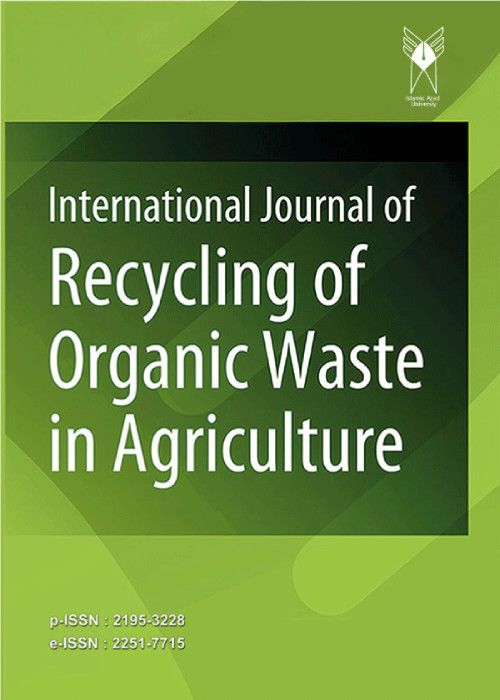Decomposition and nutrient release pattern of wheat (Triticum aestivum) residues under different treatments in desert field conditions of Sudan
Recycling of crop residues is essential to sustain soil fertility and crop production. Therefore, it is of crucial importance to study the decomposition of crop residues particularly in the arid tropics. The decomposition and nutrient release pattern from crop residues incorporated in the soil have rarely been investigated under semi-arid climatic conditions in Sudan. Decomposition and nutrient release pattern from wheat residue were investigated in a 12 week litter bag experiment under field condition. Litter bags contain 50 g wheat residue were buried in plots cultivated with guar and treated with following treatments: crop residue (CR), recommended fertilizer + crop residue (RF + CR), sewage sludge (SS) and non treated control (C). In each plot of each block, 12 litter bags were buried. Four bags from each treatment were retrieved at 2, 4, 6, 8, 10 and 12 weeks of decomposition. The decomposed residue was analysed for remaining dry matter (DM), nitrogen (N), phosphorus (P), potassium (K) calcium (Ca), and magnesium (Mg) contents. Mass loss and nutrients released from wheat residue followed the exponential model, W t = W 0 × e−kt from which the specific decay rate constants (k) and t 0. 5 and t 0. 95 were calculated.
The result show that the mineral fertilization combined with crop residues (RF + CR) resulted in the maximum decomposition and nutrient release compared to the other treatments. The half-life (t 0. 5) values of the treatments were in the following order: RF + CR (6. 70 weeks) < SS (8. 0 weeks) < CR (9. 60 weeks) < C (11. 91 weeks). The percentage remaining DM in the litter bags followed the order C (73. 25 %) > CR (66. 45 %) > SS (59. 85 %) > RF + CR (53. 85 %). A 50 % loss of residue N was found after 8. 88 weeks in the C treatment and 5. 04 weeks in RF + CR treatment. Generally, nutrient loss from all treatments in the order of Mg > K = N > Ca > P. Conclusionsی: Application of mineral fertilizer or sewage sludge enhances the decomposition of low-quality residue (wheat). Therefore, it is essential to apply fertilizer in degraded soil before incorporation of crop residue with high carbon to nitrogen ratio.
- حق عضویت دریافتی صرف حمایت از نشریات عضو و نگهداری، تکمیل و توسعه مگیران میشود.
- پرداخت حق اشتراک و دانلود مقالات اجازه بازنشر آن در سایر رسانههای چاپی و دیجیتال را به کاربر نمیدهد.


